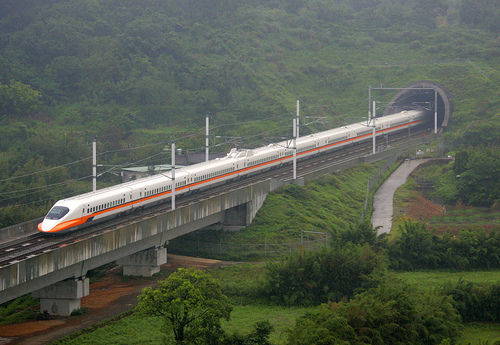Taiwan High Speed Rail

Taiwan High Speed Rail (abbreviated to THSR or HSR) is a high-speed rail line that runs approximately 345 km (214 mi) along the west coast of the Republic of China (Taiwan) from the national capital of Taipei to the southern city of Kaohsiung. With construction managed by a private company, Taiwan High Speed Rail Corporation (THSRC), which also operates the line, the total cost of the project was US$18 billion. At the time it was built this was one of the world's largest privately funded rail construction schemes. For most of its length the line runs on viaducts or through tunnels with technology mainly based on Japan's Shinkansen system mixed with European standards and system components. The THSR 700T train series is a variant of the 700 Series Shinkansen and was built by a consortium of Japanese rolling stock manufacturers.
About 61 km (38 mi) or 18% of the line is in tunnels, including 14 km (8.7 mi) of the TRUPO section in Taipei, as well as 48 tunnels with a total length of 46,257 m (28.743 mi) on the other sections, the longest of which is Paghuashan Tunnel, at a finished length of 7,364 m (24,160 ft). Forty-two of the tunnels included a total of 39,050 m (24.265 mi) of mined sections, all of which were bored with the sequential excavation and support construction method, with excavated tunnel faces of 135–155 m2 (1,450–1,670 sq ft), between November 2000 and July 2003. The finished interior cross-sectional area of 90 m2 (970 sq ft), set according to wider European standards, provides space for two tracks with safety walkways